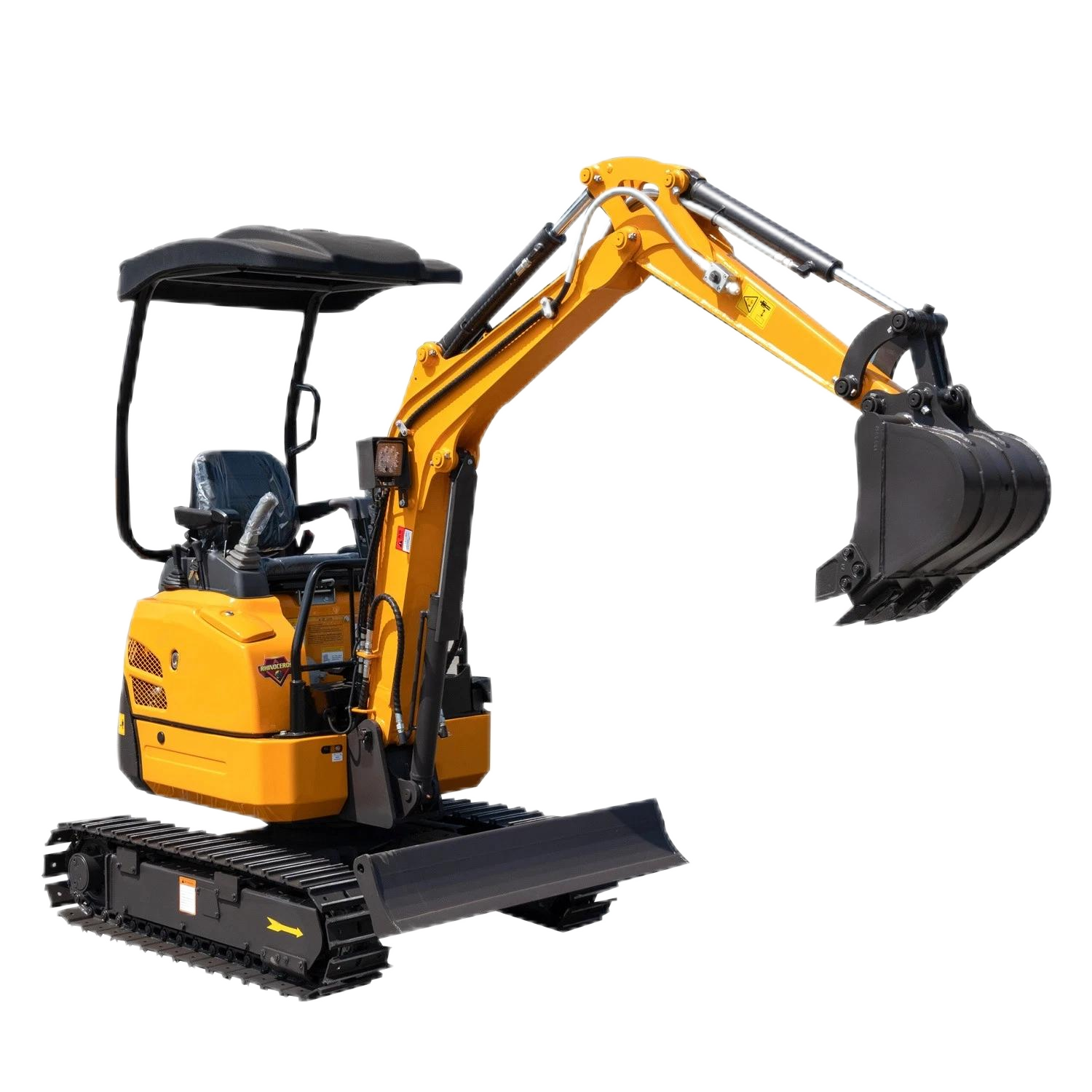Although wheeled excavators and crawler excavators differ significantly in their adaptability to working environments, as small construction machinery, they overlap in many basic application scenarios. The core is that both can complete basic operations such as small-scale earthwork and material handling. The main aspects of their identical uses are as follows:

- Small-scale earthwork operations
- Foundation excavation: Such as the excavation of shallow foundations for self-built rural houses (usually within 1 meter in depth), small cellars, septic tanks, seepage wells, etc. Both can be competent in flat terrain and solid ground (non-muddy and non-extremely soft).
- Site leveling: Perform simple leveling and earthmoving operations on small sites (such as courtyards, small construction sites, and vegetable plots) to handle surface floating soil or gravel.
- Ditch excavation: Dig small drainage ditches and irrigation canals (within 1 meter in width and 0.5-1 meter in depth) on flat ground, applicable to farmland, factory areas, residential quarters and other scenarios.
- Material handling and short-distance transportation
- Cooperate with the bucket to carry out short-distance (within 100 meters) transportation of materials such as sand, bricks, construction waste, and soil, for example, transporting building materials in small construction sites or cleaning up waste in the site.
- Light loading: Load bulk materials (such as sand and fertilizer) into small trucks, wheelbarrows and other equipment to meet low-load loading needs.
- Small-scale crushing and trimming operations
- Light crushing: Crush concrete pavements (within 5 cm in thickness), floor tiles, small stones, etc. (with the need for a crusher attachment), applicable to small renovation projects (such as courtyard ground transformation).
- Slope trimming: Trim gently sloping (usually less than 15°) soil slopes and flower bed edges to make them flat or meet specific slope requirements.
- Auxiliary agricultural and garden operations
- Agricultural aspects: Loosen soil in flat farmland, dig planting furrows (such as digging planting rows in vegetable greenhouses), or clean up small stones and weeds in the fields.
- Garden aspects: Dig tree transplant pits, trim the terrain of green belts, clean up dead branches and fallen leaves in the garden, etc.
Summary
The common uses of the two are concentrated in scenarios of low load, simple terrain (flat and solid), and small operation range. The core is to use their miniaturization advantages to complete basic tasks such as earthwork and transportation that are difficult for manual labor to handle efficiently. However, once it involves complex terrain (muddy, sloping ground), hardened ground (requiring road protection) or heavy-load operations, the applicable differences between the two will be prominent, and a more suitable model should be selected according to the specific environment.
The common uses of the two are concentrated in scenarios of low load, simple terrain (flat and solid), and small operation range. The core is to use their miniaturization advantages to complete basic tasks such as earthwork and transportation that are difficult for manual labor to handle efficiently. However, once it involves complex terrain (muddy, sloping ground), hardened ground (requiring road protection) or heavy-load operations, the applicable differences between the two will be prominent, and a more suitable model should be selected according to the specific environment.





